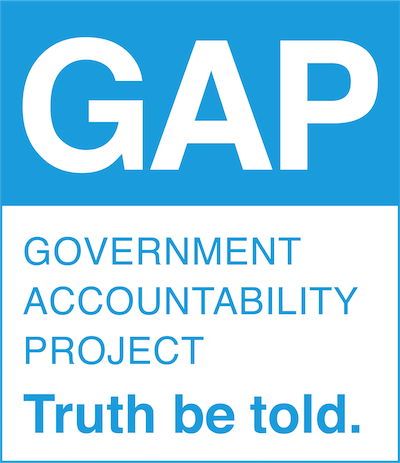The Whistleblower Project


– Introduction
– A Call to Action: Whistleblower Protection Legislation
If passed, these laws would help improve protection for whistleblowers.
Whistleblower Basics
– The Law and Whistleblowing
Deciphering the laws dealing with whistleblowing is complicated, but we hope this will help.
– Whistleblowers and Retaliation
Those who expose wrongdoing can face job loss, lawsuits or even prison.
– Leaking vs. Whistleblowing
Can you spot the difference between a leaker and a whistleblower? It may be trickier than you think.
– Nine Organizations That Work With and Help Whistleblowers
Best Practices for Journalists
– Source Protection and Anonymity for Whistleblowers
In political journalism, there’s a debate over allowing sources to talk to you off the record, in order to keep the access pipeline flowing. Anonymity and the ethics of it can also be complicated in situations beyond scoring political points.
– Whistleblowers and Reporters: Trust
Here are some best practices to follow when working with a whistleblower on a story.
– Technology Can Help Whistleblowers Communicate Anonymously
The ways that reporters and whistleblowers communicate is evolving. The introduction of secure communications has become necessary as journalists try to protect their sources, all the while trying to guarantee the information is secure.
– Anonymity: Not Always the Possible, Nor Always the Best, Strategy
Many whistleblowers want to disclose information about trouble in their workplaces while maintaining their anonymity. However, the vast majority of whistleblowers — more than 95 percent — try to solve their problems internally first.
– When Working with Whistleblowers, Same Ethical Journalism Principles Apply
Government Accountability Project’s “Working with Whistleblowers: A Guide for Journalists” details best practices for working with whistleblowers.
Voices
– Kathryn Foxhall: Good whistleblowing simply needs free speech
During the last 25 years it’s become an accepted norm for government, business, nonprofits and other organizations to prohibit employees to ever communicate with journalists without notifying and being overseen by the authorities, often public information officers. The restrictions are intense, highly effective censorship. The Society of Professional Journalists has made opposing them a priority.
– Jesselyn Radack: Challenges in Defending National Security Whistleblowers
War crimes, mass surveillance, torture: some of the biggest stories in modern history relied on whistleblowers in national security and intelligence agencies. They came forward at great risk to expose the truth.
– Nick Schwellenbach: The Modern Politics of American Whistleblowing
Insiders Valued More Highly in U.S. Society, But Still Face Perils.
 In a September 2015 press conference, Dr. Mona Hanna-Attisha risked her career to reveal research findings that showed children's blood lead levels in Flint, Michigan, had doubled after the city’s water source was switched to the Flint River in April 2014.
Get the full details of Mona's story, along with 24 other times whistleblowers changed history.
In a September 2015 press conference, Dr. Mona Hanna-Attisha risked her career to reveal research findings that showed children's blood lead levels in Flint, Michigan, had doubled after the city’s water source was switched to the Flint River in April 2014.
Get the full details of Mona's story, along with 24 other times whistleblowers changed history.
Features
– Mary Willingham: An Attempt To Make The College Athletic System Better For Athletes
Mary Willingham talks about why she spoke out about the treatment of college athletes at North Carolina and why — despite death threats from college sports enthusiasts — she would do it again.
– Megan Wood: Reporting with Purpose
Megan Wood talks about why she looked into San Diego Christian College’s missing $20 million in expenses and how whistleblowers make a difference in their communities.
– Richard Bowen: Blowing the Whistle on Defective Mortgages
While evaluating $90 billion of mortgages Citigroup was buying from Countrywide and other lenders, former Citigroup vice president Richard Bowen tried to warn company leaders and board members about the rise in defective mortgages. In 2010 he testified before the Financial Crisis Inquiry Commission. Here, in Bowen’s words, is what happened next.
– Craig Watts: Typical American Farmer Risks Career to Reveal Inhumane Conditions at Chicken Farms
Craig Watts was a typical American farmer with three kids, two dogs, and a barn full of chickens. That all changed though when he decided to show the public the conditions chickens, sold by Perdue farms, were being raised in.
Credits
Meet the Project Team
Thus, when a whistleblower decides to go to an external source to make a disclosure — such as to a journalist or an advocacy organization — their fingerprints are already on the information. Management can frequently suss out the source once the issue is made public. Even if the employee didn’t raise the concern internally first, it is often still relatively easy to figure out the source because the specificity of the disclosure can be traced to the job responsibilities and expertise of the employee.
Knowing this, promises of anonymity to a source may be hard to keep if the information is going to be used in public ways or through strategic discussions with government investigators, other sources for verification, or advocacy groups.
Remaining anonymous also may not be the best strategy for the whistleblower. For instance, trying to remain anonymous while the disclosure is public can make a legal case of reprisal more difficult to prove, if not impossible. Under all whistleblower laws, an employee must show that the employer had knowledge of their whistleblowing. Going public, with the whistleblower serving as a human interest focal point for news stories, can actually sustain the whistleblower’s viable legal rights.
Public disclosure can even preempt reprisal by putting the employer on notice that the employee is engaging in protected whistleblowing. When a whistleblower experiences solidarity with a team of allies — journalists, public interest organizations, champions in Congress, a lawyer — focus can be put on the wrongdoing exposed by the whistleblower, thus defeating efforts to vilify the messenger. Surrounding the whistleblower with support not only can insulate the employee from retaliation; it also can amplify awareness of the underlying problems to demand reform.
Going public guarantees, however, that the employee will burn professional bridges. If a scorched-earth, no-prisoners conflict did not already exist, that dynamic becomes a near-certainty. Many whistleblowers, accordingly, want to maintain anonymity — despite the greater insulation and effectiveness that speaking out publicly often affords them.
Be aware, even with strong efforts to protect a whistleblower’s identity, the whistleblower is still at risk while an employer searches for the internal source. Harassing and expensive-to-defend defamation suits can be lodged against journalists and advocacy organizations to force divulgence of sources. Because of limited privileges afforded to journalists and public interest groups, whistleblowers should be wary of unqualified promises of absolute anonymity — because it simply cannot be guaranteed. Brokering communications with external parties through an attorney with whom a whistleblower’s communications are privileged can offer an important layer of protection for a whistleblower.
The legal landscape that protects whistleblowers is complex, making it difficult for employees, and even lawyers who lack experience with whistleblowers, to assess the risks and benefits of various disclosure strategies. That is why both whistleblowers and journalists should consult a lawyer with expertise in whistleblowing before releasing information. This ensures that the strategy for disclosure is fully informed, minimizes risk, and maximizes effectiveness.
Adapted from The Government Accountability Project’s Working with Whistleblowers: A Guide for Journalists (2017).
See Ethics Resource Center, “Inside the Mind of a Whistleblower: A Supplemental Report of the 2011 National Business Ethics Survey” (2012). [Return to story]
Next: When Working with Whistleblowers, Same Ethical Journalism Principles Apply